Japan's 12 Most Famous Samurai
Japan's most famous samurai largely emerged from its two most significant feudal conflicts: the Genpei War (1180-1185) and the last years of the Warring States Period (1467-1590). The former war produced the Kamakura Shogunate (1185-1333); the latter series of conflicts culminated in the Tokugawa Shogunate, which then ruled Japan from 1603 to 1868.
By Michael Kanert12. Tomoe Gozen (巴 御前)
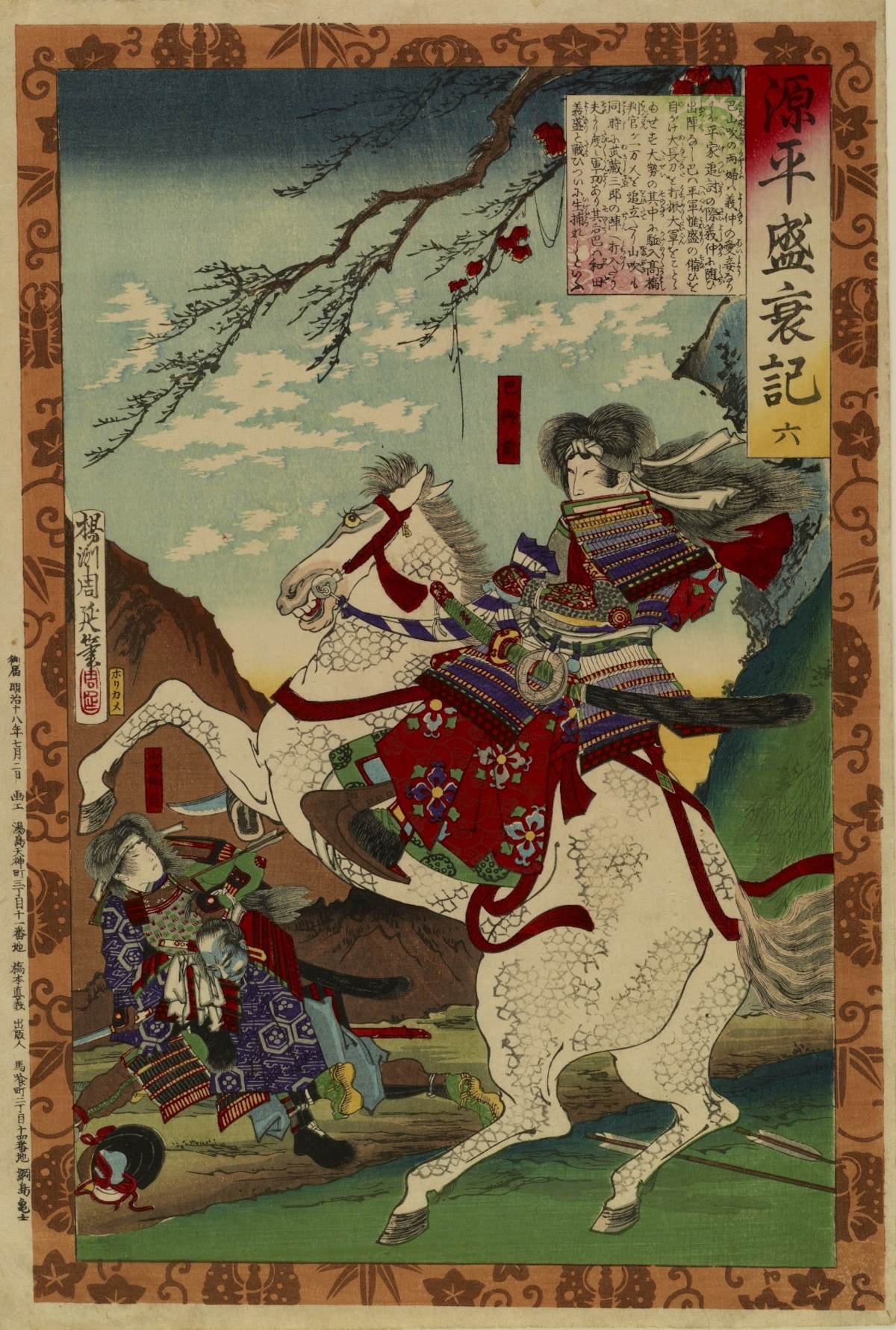
https://en.wikipedia.org/wiki/Tomoe_Gozen
Tomoe Gozen (1157?-1247?) was an onna-bugeisha (女武芸者, female martial artist) who served Minamoto no Yoshinaka during the Genpei War (1180-1185). Before the samurai became a formalized caste in the Edo Period (1603-1868), women were trained to use naginata spears and kaiken daggers to protect communities with few male fighters. In fact, the legendary Empress Jingu is said to have led an invasion of Korea in the year 200 after her emperor-husband was slain in battle, though whether this invasion ever actually happened remains a matter of debate.
The Genpei War was fought between the powerful Minamoto (Genji) and Taira (Heike) clans, both offshoots of the imperial line. Tomoe had a number of achievements in the war, leading 1,000 cavalry, surviving a battle of 300 against 6,000, and collecting opponents' heads like postage stamps. In The Tale of the Heike (平家物語・Heike Monogatari), an epic poem about the conflict compiled by at least 1309, it's written that in addition to Tomoe's beauty, "She was also a remarkably strong archer, and as a swords-woman she was a warrior worth a thousand, ready to confront a demon or a god, mounted or on foot."
As the Genpei War came to a close, Yoshinaka vied for power over the entire Minamoto Clan. While he was defeated by his cousin Yoritomo (who went on to found the Kamakura Shogunate), it's recorded that Tomoe unhorsed, pinned and decapitated Yoritomo's strongest warrior at the Battle of Awazu in 1184. What became of her thereafter is unclear, and the role of onna-bugeisha faded toward the Edo Period, though Tomoe reemerged as a popular figure in ukiyo-e prints and kabuki plays.
Related Article
Five Women Warriors from Japanese History
11. Kusunoki Masashige (楠木 正成)
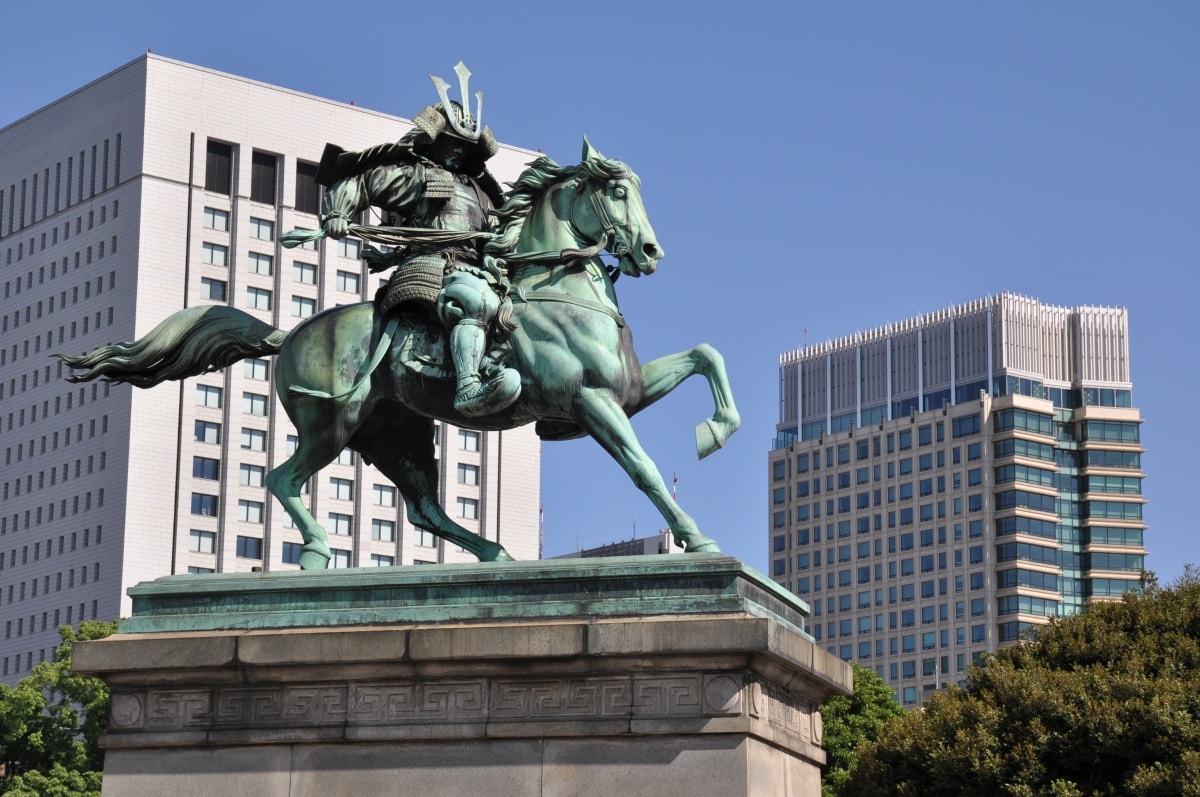
https://en.wikipedia.org/wiki/Kusunoki_Masashige
Kusunoki Masashige (1294?-1336) is famous both as a military strategist and for his unfailing devotion. In 1331, he joined Emperor Go-Daigo (1288-1339) in a bid to wrest power back from the Kamakura Shogunate, under which the emperor had become a mere figurehead. Kusunoki's greatest triumph came in 1332, when he defended Chihaya Castle, located south of Osaka, against the shogunate's 100,000-man army with just 2,000 men.
Kusunoki was given control of several parts of the Kansai area after the war was won. However, the Kenmu Restoration would be short-lived, as the Ashikaga Clan betrayed Kusunoki and twice led armies against Kyoto in 1336. On the second occasion, Kusunoki advocated letting the superior Ashikaga force take the capital while the emperor's supporters took refuge among the monks of Mount Hiei, then sweep down upon the Ashikaga and trap them in the city. Go-Daigo, however, ordered Kusunoki to advance. The seasoned strategist knew this to be a death sentence, yet he accepted. When his troops were finally overwhelmed at the Battle of Minatogawa near present-day Kobe, Kusunoki committed suicide rather than allow himself to be captured. He is now a symbol of courage and devotion to the emperor, and a statue of him stands outside Tokyo's Imperial Palace.
10. Sanada Yukimura (真田 幸村)
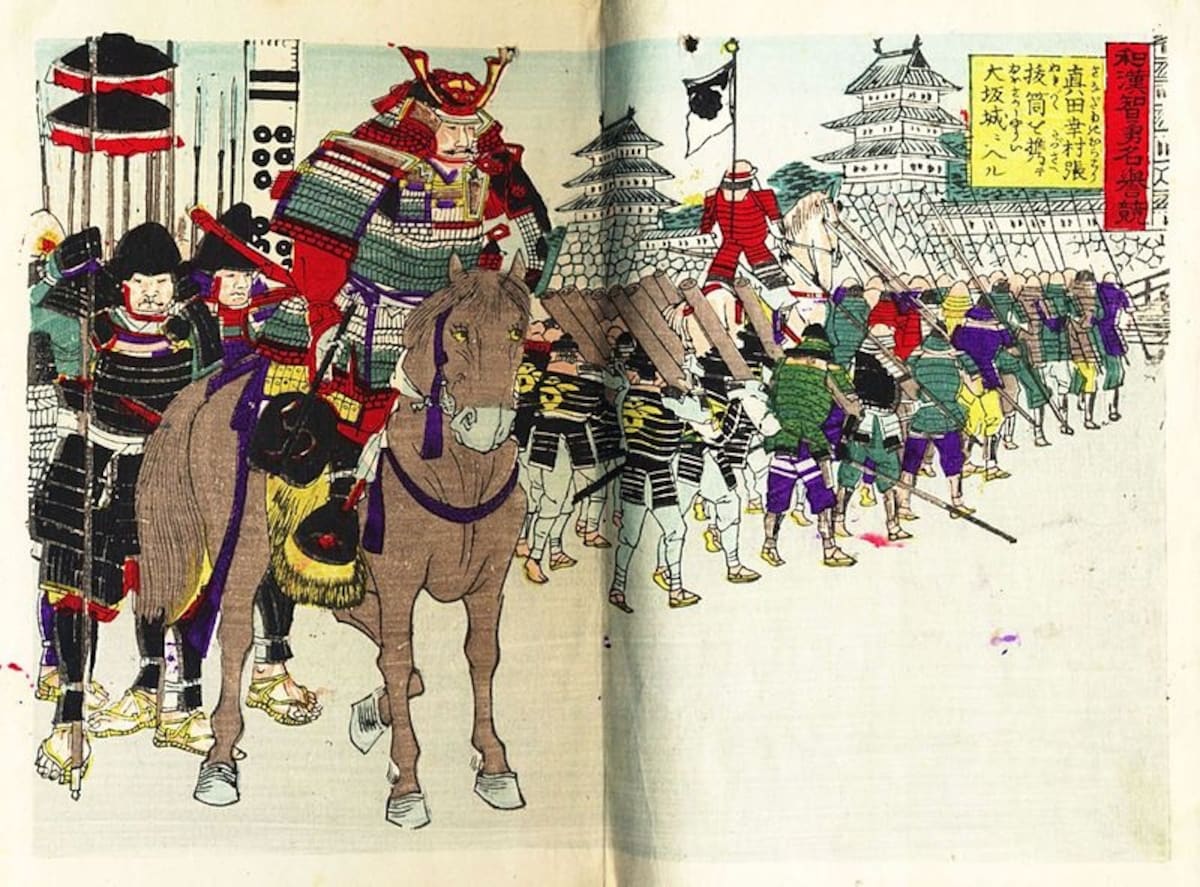
https://en.wikipedia.org/wiki/Sanada_Yukimura
Hailed in his day as the greatest warrior in Japan, Sanada Yukimura (1567-1615) battled valiantly against the tumultuous beginnings of Tokugawa rule over the nation. His brilliant defense of Ueda Castle in Nagano ensured that Tokugawa Hidetada's 40,000 troops wouldn't arrive in time to support his father, Ieyasu, at the decisive Battle of Sekigahara in 1600. Ieyasu won nonetheless, and though he soon claimed control over all of Japan, Yukimura led the defense in the final resistance to Tokugawa rule at the Siege of Osaka from 1614 to 1615, fighting so fiercely that he forced the superior Tokugawa forces to accept an armistice after the initial Winter Campaign. However, Ieyasu returned several months later with 150,000 men for the Summer Campaign, and while Yukimura led his own 60,000 troops bravely, he was ultimately exhausted and slain.
9. Yasuke (弥助)
https://www.youtube.com/watch?v=_An0-cbZ60Q
Yasuke was an African slave brought to Japan in 1579 by the Jesuit missionary Alessandro Valignano. Nobody in Japan had seen a black person before, so his presence caused quite a sensation. He was called to an audience with Oda Nobunaga, the most powerful warlord of the day, who was so stunned by his appearance that he had him strip to the waist and rub his skin to prove he wasn't colored with ink.
Nobunaga was so impressed by Yasuke's strength and size—recorded as roughly 188 centimeters (6ft 2in) tall—that he made him his personal retainer and bodyguard. In 1581, Yasuke was elevated to the rank of samurai and stationed at Azuchi Castle, Nobunaga's crowning glory, where he dined with the warlord and functioned as his personal sword bearer.
When Nobunaga was betrayed by Akechi Mitsuhide and forced to commit suicide at Honno-ji Temple in 1582, Yasuke was there, and battled Mitsuhide's forces. He escaped to Azuchi Castle and briefly served Nobunaga's son until he, too, was attacked by Mitsuhide and committed suicide.
Yasuke then surrendered his sword to Mitsuhide who, unaccustomed to a samurai surrendering rather than killing himself after the death of his lord, ordered Yasuke returned to the Jesuit mission in Kyoto. Whether this was out of disrespect for a "beast," as Mitsuhide put it, or cover for an act of mercy remains a matter of debate. Thereafter, Yasuke's fate is unclear, though it's possible his presence was recorded around Kyushu in 1584.
Nobody is entirely sure where Yasuke was born, though it's been proposed he may have been from Mozambique, Angola or Ethiopia, or perhaps a European-born slave from Portugal. His real name, too, is unknown, though Yasuke is thought to be its Japanese equivalent.
8. Uesugi Kenshin (上杉 謙信)
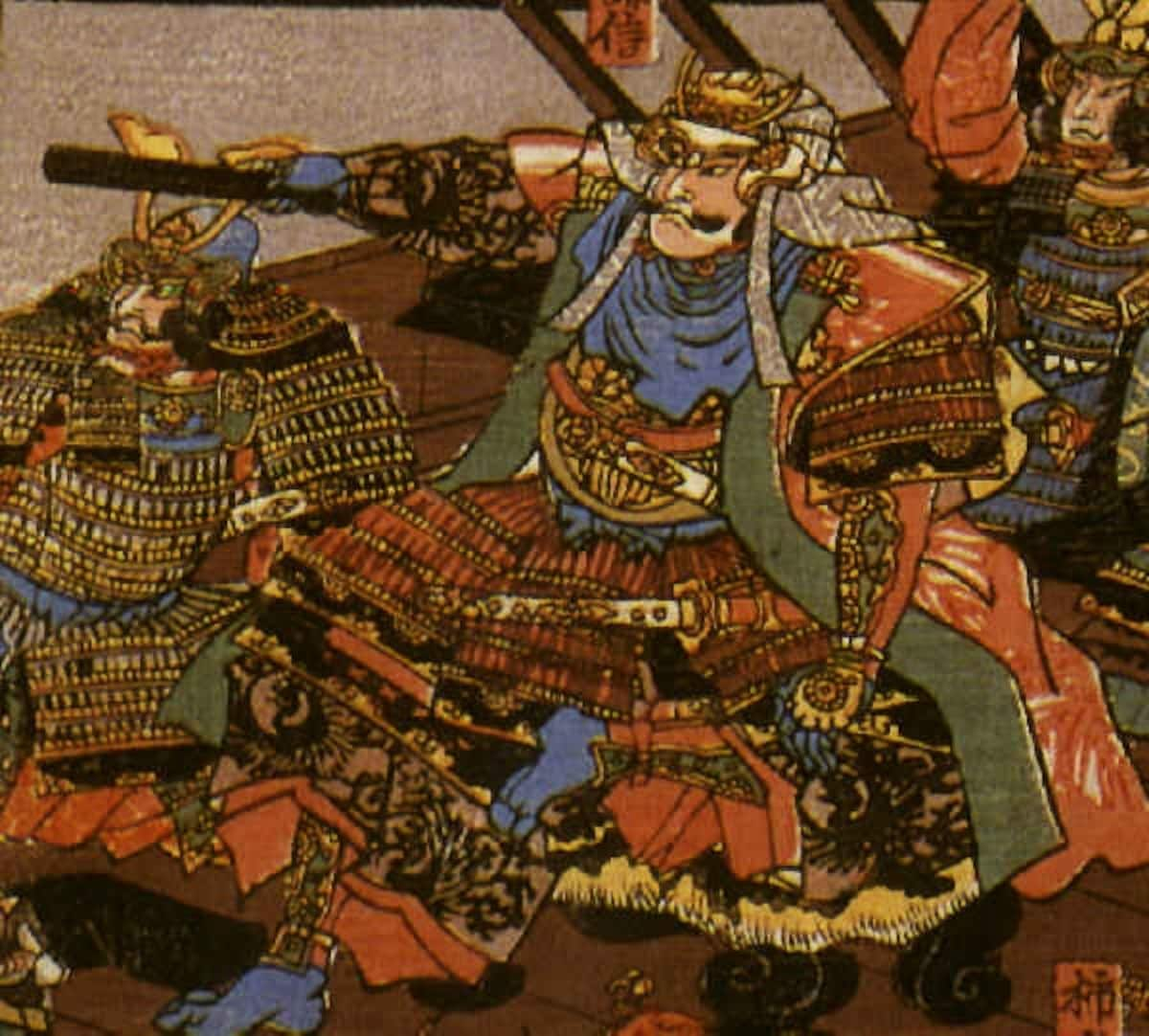
https://en.wikipedia.org/wiki/Uesugi_Kenshin
The fourth son of a powerful warlord, Uesugi Kenshin (1530-1578) emerged from a succession struggle and internal strife with peasants and warrior monks to take control of Echigo Province, now mainland Niigata Prefecture, during Japan's Warring States Period (1467-1590). Sometimes called the Dragon of Echigo (越後の龍・Echigo no Ryu), in addition to his military prowess, he was famous for his rivalry with Takeda Shingen, who was making advances in northern Shinano (now Nagano) just as Kenshin was securing Echigo across the border.
Between 1553 and 1564, the two samurai would battle five times at Kawanakajima, located in the southern part of what's now Nagano City. Though most of these battles were mere skirmishes, in the fourth battle, in October 1561, Kenshin nearly defeated Shingen, going so far as to personally ride into Shingen's command post. Utterly unprepared, Shingen fended off Kenshin's assault with nothing more than an iron fan, holding him back until one of his retainers could spear Kenshin's mount and drive him off.
When the Hojo Clan, based in Kanto, placed an embargo on salt supplies to Shingen's stronghold in Kai Province (now Yamanashi Prefecture), Kenshin sent salt from Echigo, reputedly saying, "I do not fight with salt, but with the sword." He's even said to have wept when he heard of Shingen's death in 1573, saying, "I have lost my good rival. We won't have a hero like that again!"
Kenshin later fought against the growing power of Oda Nobunaga, Japan's premier military leader, even handing him a major defeat at the Battle of Tedorigawa (now in Ishikawa Prefecture) in 1577. He amassed an army—now even allying with the Takeda—to continue his assault on Oda territory in 1577 to 1578, but died of ill health before he could attack. His tombstone can be seen at Rinsen-ji Temple in Joetsu City, Niigata, where he studied Zen and martial arts as a youth.
7. Minamoto no Yoshitsune (源 義経)
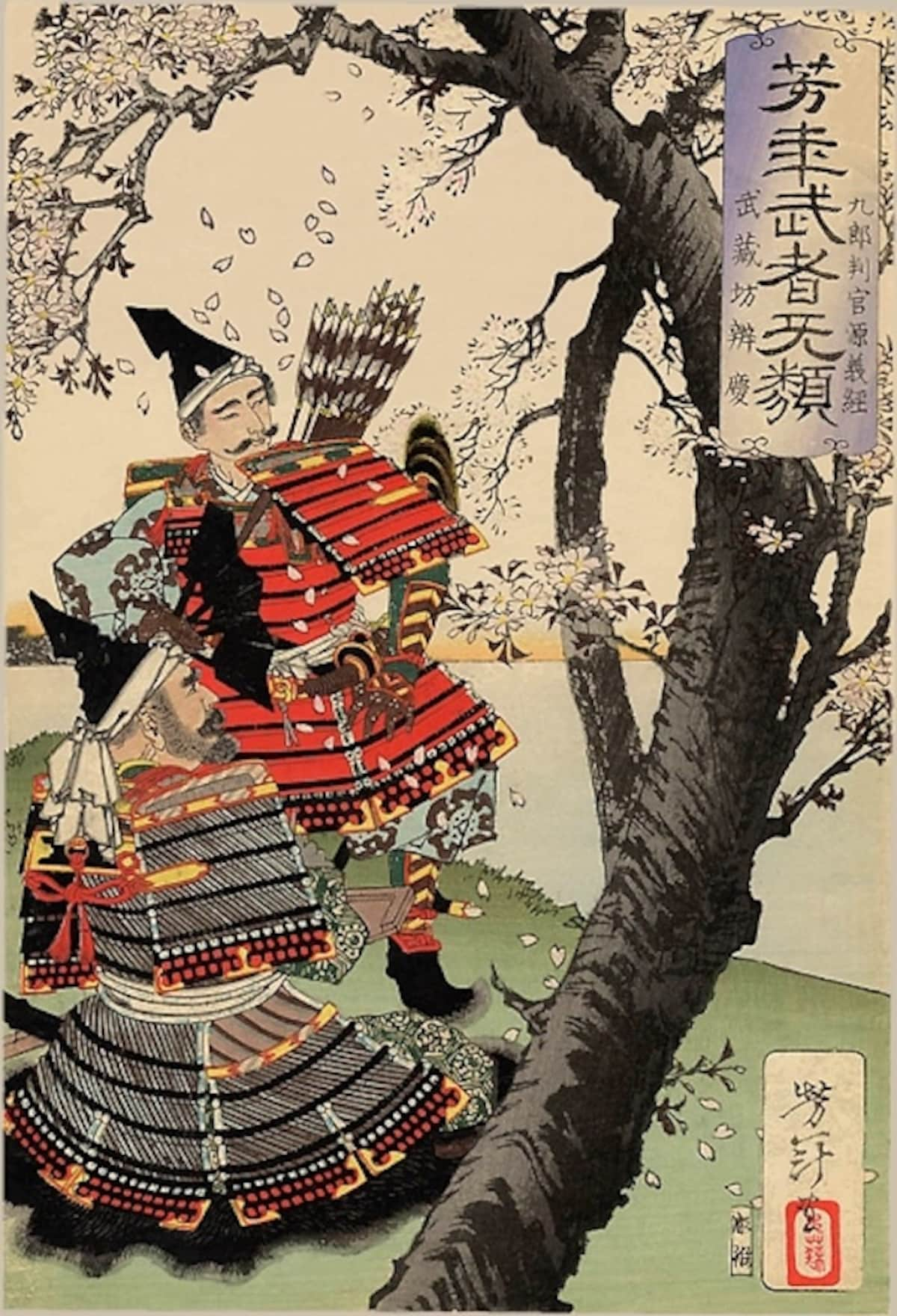
https://en.wikipedia.org/wiki/Minamoto_no_Yoshitsune
Minamoto no Yoshitsune (1159-1189) was a leader during the Genpei War (1180-1185) between the Minamoto (Genji) and Taira (Heike) clans.
As a child, much of Yoshitsune's immediate family was killed in the Heiji Rebellion of 1160. His half-brother Yoritomo was exiled to the Izu Peninsula, while Yoshitsune was placed in the care of the monks of Kurama Temple in the mountains north of Kyoto. In 1174 he relocated to Hiraizumi in what was then Mutsu Province, and which now makes up the eastern half of the Tohoku region in northern Japan. For years, Yoshitsune was protected by Fujiwara no Hidehira, head of the powerful Northern Fujiwara Clan.
Yoshitsune joined Yoritomo when the latter raised an army to fight the Taira Clan in 1180. Yoshitsune led his clan to a succession of victories, culminating with the battle of Dan-no-ura in what's now Yamanashi Prefecture. However, after the war was won and Yoritomo founded the Kamakura Shogunate, he became suspicious of his half-brother, nullifying his titles and forcing him to go back into hiding in Hiraizumi in 1185. However, after his patron Hidehira died in 1187, Yoshitsune was betrayed by his son, who surrounded his residence and forced him to commit suicide.
The incident is particularly famous for the Standing Death of Benkei, a fearsome warrior monk who had been Yoshitsune's retainer since the latter defeated him at a bridge in Kyoto. On his final day, it's said Benkei killed more than 300 men singlehandedly as he guarded the bridge to Yoshitsune's residence, after which the soldiers attacked him from a distance with arrows. Though he eventually stopped moving, he did not fall, and when at last the soldiers worked up the courage to cross the bridge, they found that Benkei had died standing on his feet.
Yoshitsune is symbolic of the tragic hero in Japan. He is a popular figure in kabuki, as well as the central character in the third section of the epic poem, The Tale of the Heike (平家物語・Heike Monogatari), which recounts the events of the Genpei War.
6. Miyamoto Musashi (宮本 武蔵)
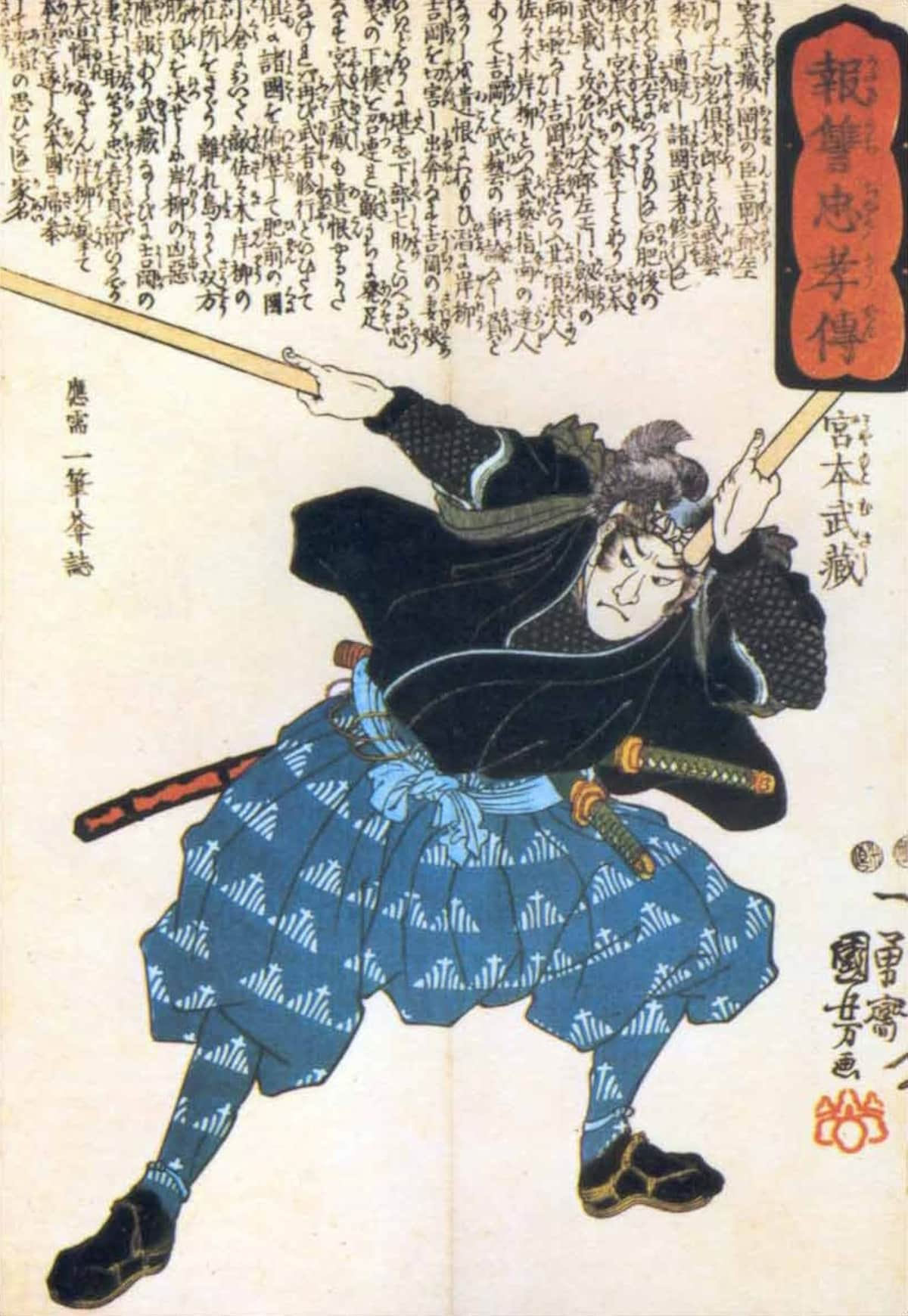
https://en.wikipedia.org/wiki/Miyamoto_Musashi
While he never held his own lands or served a lord as a formal samurai, as a duelist, none can compare to Miyamoto Musashi (1584?-1645). Undefeated across at least 60 duels, he founded multiple schools of swordsmanship and, later in life, wrote The Book of Five Rings (五輪の書・Go Rin no Sho), which is still read today for insight into his tactics and philosophy.
While there's uncertainty regarding his place of birth, Musashi wrote in The Book of Five Rings that he was born in Harima Province, the southern part of what's now Hyogo Prefecture. He's believed to have been born in a now-lost village called Miyamoto right on the border with Mimasaka Province to the west. Musashi's father was an accomplished swordsman serving the lord of Takeyama Castle, which overlooked the village.
Brazen and reckless, Musashi won his first duel at the age of 12 or 13, accepting an open challenge from a traveling samurai whom he stunned with a sudden attack with a wooden pole, then beat to death on the ground. Coming of age just after the end of the Warring States Period (1467-1590), there's debate over which specific battles Musashi engaged in, and even on which side, with some placing him on the losing side of the Battle of Sekigahara (1600), which cemented the dominance of the Tokugawa, while others say he was fighting elsewhere at the time. He's also been placed on both sides of the Siege of Osaka (1614-1615), where the Tokugawa eliminated the last lingering threat to their rule.
Better known than his battles are Musashi's many duels, often won using only a wooden sword. Early in his career he defeated several members of the Yoshioka school, thus ending the reign of Kyoto's preeminent school of swordsmanship. He then traveled Japan in a warrior pilgrimage, or musha shugyo (武者修行) from 1605 to 1612, dueling masters of various schools and weapons.
In 1612 he fought his most famous duel , which was against Sasaki Kojiro on the tiny island of Funajima, situated in the Kanmon Straits between Japan's main island and Kyushu. Musashi aggravated his opponent by intentionally arriving on the island nearly three hours late. In the course of a fierce but brief duel, he then struck him dead with a wooden sword he'd carved from an oar on his way to the island.
After the Siege of Osaka, Musashi helped construct Akashi Castle in what's now Hyogo Prefecture, and also assisted in laying out the town of Himeji. He traveled again for a time, offering himself as a sword instructor or vassal to various major figures, including Tokugawa Ieyasu himself (who rejected him), until in 1633 he finally took up residence with the daimyo of Kumamoto Castle, by which time he dueled less and was interested in learning to paint. In 1643 he retired to a cave in western Kumamoto, known as Reigando (霊巌洞), to write The Book of Five Rings. He completed the work in February 1645, then died in the cave around June 13 at the age of 62.
Now immortalized in countless films and period dramas, Musashi is particularly known for his two-sword Niten Ichi-ryu (二天一流, "Two Heavens as One") style, which he perfected while in Kumamoto. Though he's a popular figure in the public imagination, given his limited effect on Japanese history, Musashi is not as universally regarded (or studied) as the remaining samurai on this list.
5. Takeda Shingen (武田 信玄)
https://www.youtube.com/watch?v=dKqlEshd97A
The Takeda Clan was descended from the Minamoto Clan, which branched off from Japan's ancient imperial line in the ninth century.
Takeda Shingen (1521-1573) was sometimes referred to as the Tiger of Kai (甲斐の虎・Kai no Tora), in particular as he was opposed to Uesugi Kenshin, the Dragon of Echigo, with tigers and dragons being traditional enemies in Buddhist imagery (confusingly, Uesugi Kenshin was also sometimes called the Tiger of Echigo). Kai Province was the region that now corresponds to Yamanashi Prefecture.
After ousting his own father from power to take control of the Takeda Clan in 1540, Shingen moved to conquer Shinano Province (now Nagano Prefecture). Fortress after fortress fell before him, until finally he came close to the forces of Uesugi Kenshin in Echigo Province (now Niigata) to the north. Though the two fought inconclusively from 1553 to 1564, Shingen ultimately managed to keep Kenshin's forces out of Shinano, allowing Shingen to focus on campaigns to the south. Early in Oda Nobunaga's rise to power, he joined forces with Tokugawa Ieyasu to claim Suruga Province (now central Shizuoka Prefecture) in 1569, then, feeling secure in his position, betrayed Nobunaga and Ieyasu to attack the combined Oda-Tokugawa forces in 1572.
Shingen was considered the only daimyo with the martial and tactical ability to counter Nobunaga's ongoing conquest of Japan, defeating Ieyasu at the Battle Mikatagahara in what's now western Shizuoka Prefecture. However, Shingen died in his camp in 1573, either due to disease or a war wound. After his death, the Takeda were largely destroyed by Nobunaga and Ieyasu at the Battle of Tenmokuzan in 1582. However, Shingen's well-constructed system of administration, laws and taxes influenced later leaders, including Ieyasu himself.
To this day, Takeda Shingen is celebrated at the Shingen-ko Festival on April 12 in Kofu City, Yamanashi. A popular figure in pop culture, the daimyo in Akira Kurosawa's Kagemusha is based on Shingen.
4. Date Masamune (伊達 政宗)
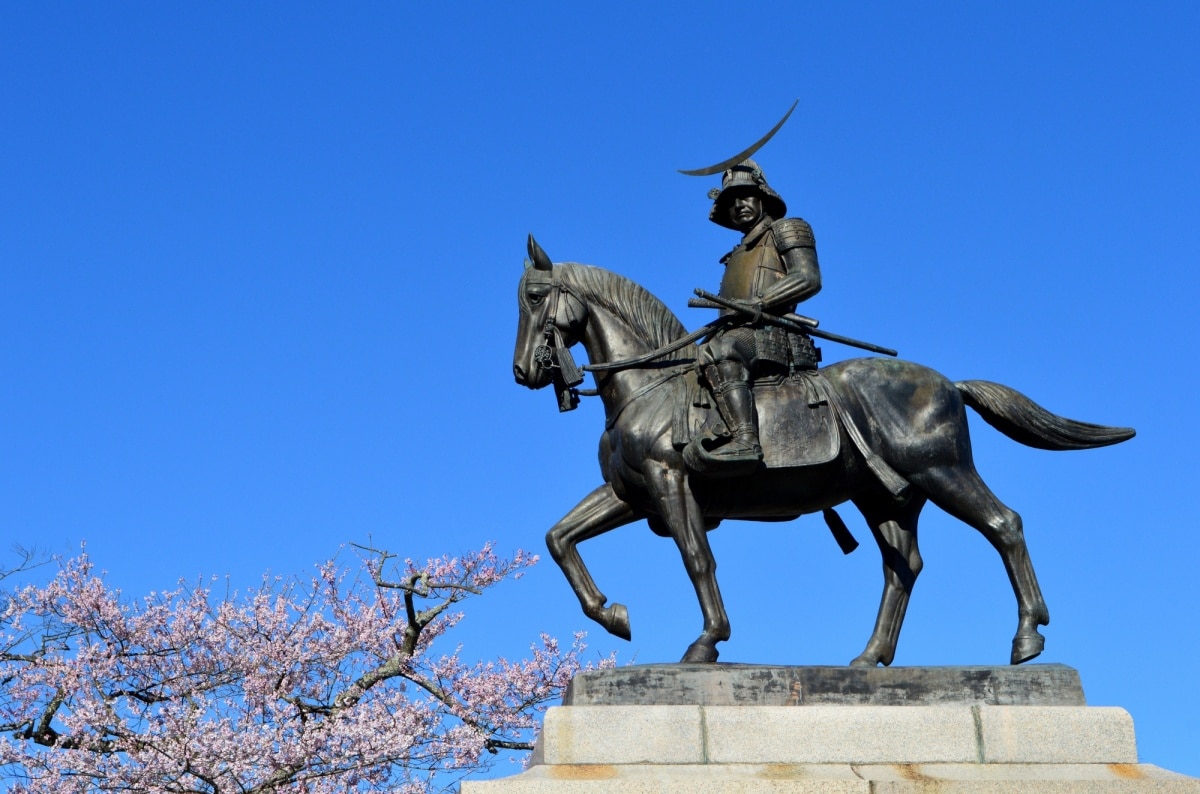
Date Masamune (1567-1636) was born in Yonezawa Castle in what's now Yamagata Prefecture. He led his first campaign at the age of 14 and succeeded his father at 17, conquering much of what is now the Tohoku region by 1589. He joined Toyotomi Hideyoshi at the Siege of Odawara in 1590 and, following Hideyoshi's unification of Japan, joined in the ultimately failed campaigns in Korea as well.
Following Hideyoshi's death in 1598, Masamune sided with Tokugawa Ieyasu, joining Ieyasu at the Battle of Sekigahara in 1600, and again at the Siege of Osaka in 1615. Ieyasu rewarded him with the Sendai Domain, which has since been split between Miyagi, Iwate and Fukushima prefectures.
Masamune founded the city of Sendai in 1604, and in late 1613, he sent the Western-style ship the Date Maru (伊達丸), also called the San Juan Bautista, to Mexico with the intent of sending a diplomatic envoy to the Pope in Rome. Respected for his ethics, Masamune is quoted as having said, "Rectitude carried to excess hardens into stiffness; benevolence indulged beyond measure sinks into weakness."
Having lost sight in his right eye due to smallpox as a child, Masamune was known as the One-Eyed Dragon, or Dokuganryu (独眼竜). He was easily identified by the huge crescent moon on his helm.
3. Toyotomi Hideyoshi (豊臣 秀吉)
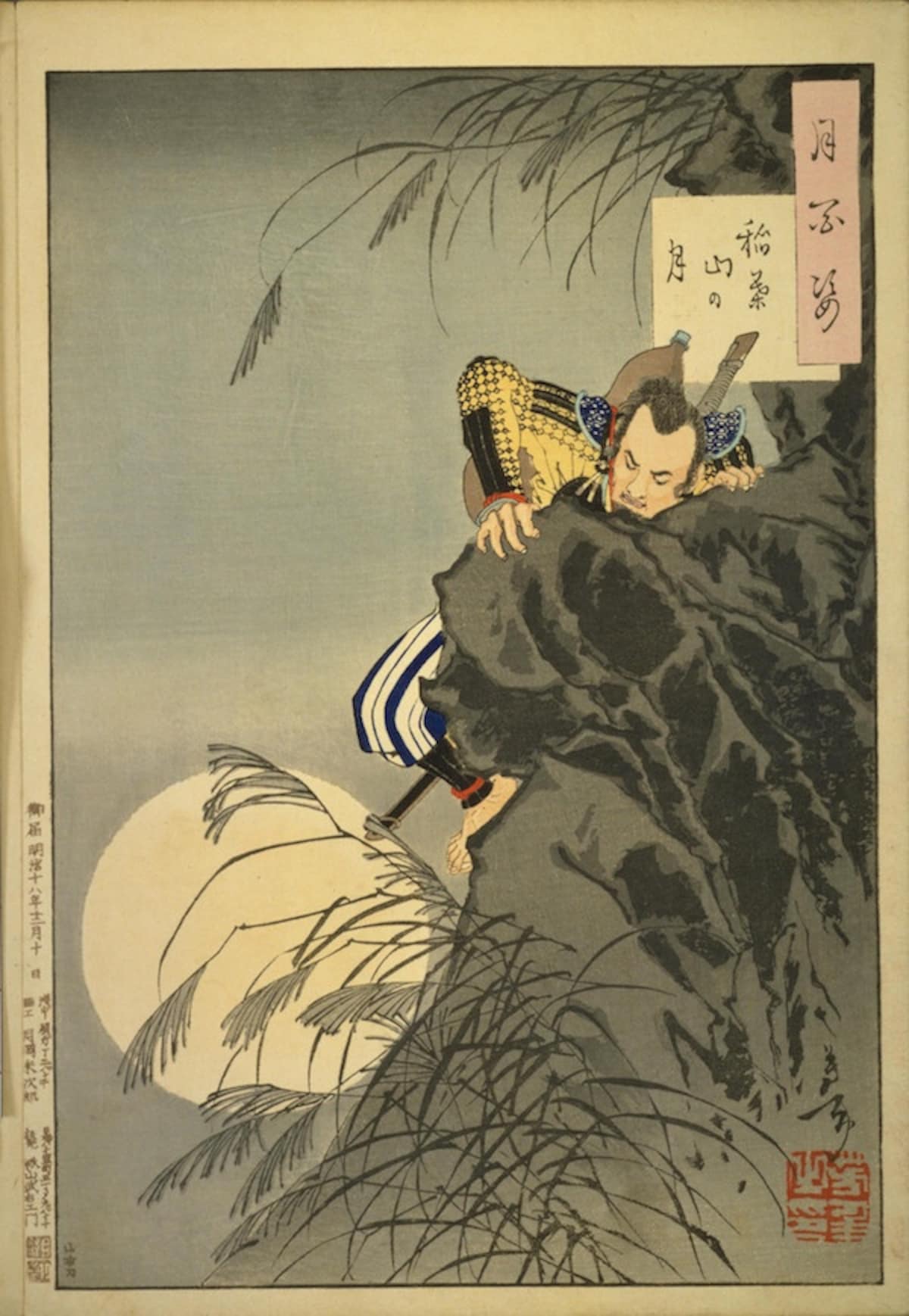
https://en.wikipedia.org/wiki/Toyotomi_Hideyoshi
The Top Three samurai on our list are the Three Great Unifiers of Japan, who were responsible for bringing the nation back under centralized rule following the fractious Warring States Period (1467-1590). They laid the foundation of Japan as we know it today.
Toyotomi Hideyoshi (1537-1598) was the second of these unifiers. Son of a common foot soldier in Owari Province (now western Aichi Prefecture), he joined the Oda Clan as a foot soldier himself in 1558. He was one of Oda Nobunaga's sandal-bearers at the Battle of Okehazama, where Nobunaga defeated Imagawa Yoshimoto to become the dominant power in Owari.
Hideyoshi then repaired Sunomata Castle in Mino Province (now Gifu Prefecture) to support Nobunaga's siege of Inabayama Castle, which Hideyoshi further facilitated by bribing Mino samurai to desert or switch sides. Nicknamed Kozaru, or "little monkey," due to his facial features and skinny appearance, he soon became one of Nobunaga's most distinguished generals.
Hideyoshi was made daimyo of part of Omi Province (now Shiga Prefecture) after he helped take the region from the Azai Clan, and in 1576, Nobunaga sent him to Himeji Castle to face the Mori Clan and conquer western Japan. After Nobunaga was betrayed and forced to commit suicide by Akechi Mitsuhide in 1582, Hideyoshi obliterated the Akechi forces at the Battle of Yamazaki, then threw his support behind 2-year-old Oda Hidenobu to succeed Nobunaga. While the Oda's chief general, Shibata Katsuie, opposed this plan, his defeat by Hideyoshi at the Battle of Shizugatake in 1583 made the onetime sandal-bearer the de-facto leader of all Oda forces—including, after some inconclusive conflict, Tokugawa Ieyasu.
Before his death, Oda Nobunaga had already conquered the southern half of mainland Japan, and Hideyoshi went on to take the large islands of Shikoku and Kyushu. Unforgiving of challenges to his power, in 1587 Hideyoshi banished the Christian missionaries who had begun to make inroads in Kyushu, and while Nobunaga had welcomed such missionaries to counter the troublesome influence of warrior monks, Hideyoshi would go on to crucify 26 missionaries and Christian converts in 1597.
In 1590, the fall of the Hojo Clan at the Siege of Odawara finally brought about the end of the Warring States Period (1467-1590). Hideyoshi then turned his eye to Ming China, which he hoped to conquer by way of Korea. However, two muddled Korean campaigns in 1592 and 1597 ended any such ambitions. Hideyoshi himself did not survive to see the second campaign through, as he died in September 1598 with his troops still abroad.
Beyond being a ruthless warlord and cunning negotiator, Hideyoshi was a fan of tea ceremony—though he at one point ordered his tea master to commit suicide—and also enjoyed performing in Noh plays, forcing his daimyo to join him onstage as supporting characters. He also reformed the class system, forbidding commoners (such as himself) to take up arms, and set up tight internal migration controls, thus laying the foundation for the social structure over which Tokugawa Ieyasu would ultimately rule.
2. Tokugawa Ieyasu (徳川 家康)
https://en.wikipedia.org/wiki/Tokugawa_Ieyasu
Though he may be best known for the shogunate that took his name, the first Tokugawa shogun was equal parts warrior and cold-blooded strategist. Tokugawa Ieyasu (1543-1616) was the son of the daimyo of Mikawa Province, now the eastern part of Aichi Prefecture. At the age of 5 he was kidnapped by the Oda Clan and held hostage for political leverage in Nagoya. At 6, his father was murdered by his vassals, who had been paid off by the Oda. At 9, after the sudden death of the Oda patriarch, Oda Nobunaga agreed to allow Ieyasu to be transferred to Sunpu, where he then lived as a hostage of the Imagawa Clan until he was 13, when he joined the Imagawa in their battles against the Oda.
After Imagawa leader Yoshimoto was killed in a surprise attack by Nobunaga, Ieyasu decided to switch sides and joined the Oda. His soldiers were part of the force that took Kyoto under Nobunaga in 1568. He allied with Takeda Shingen to capture Suruga Province (now central Shizuoka Prefecture), then teamed up with Uesugi Kenshin to turn on his onetime ally. Ieyasu was committed to victory at any cost: when his wife and first son were accused of conspiring to murder Nobunaga, Ieyasu allowed her to be executed while his son was forced to commit suicide, leading Ieyasu to name his third son, Hidetada, as heir, since his second son had already been adopted by Toyotomi Hideyoshi.
Ieyasu was too late to take revenge on Akechi Mitsuhide for his betrayal of Nobunaga—Hideyoshi beat him to it. He then opposed Hideyoshi's plan to establish the infant Hidenobu as the new head of the Oda Clan, but stayed out of Hideyoshi's battle with Shibata Katsuie in 1583, and was also not involved in Hideyoshi's conquests of Shikoku and Kyushu. He did, however, join in the Siege of Odawara, after which he was granted the Hojo Clan's former provinces in the Kanto Plain in exchange for his own existing holdings. He was not directly involved in Hideyoshi's failed Korean campaigns, though he was given command over reserve troops in Kyushu.
When Hideyoshi died in 1598, Ieyasu was one of the Council of Five Elders selected to administer the newly unified country until Hideyoshi's 5-year-old son, Hideyori, came of age. However, Ieyasu made alliances with daimyo dissatisfied with Toyotomi rule, and in 1600 his forces met those of Ishida Mitsunari, behind whom Toyotomi loyalists had rallied, at Sekigahara in what's now Gifu Prefecture. With more than 160,000 troops engaged in the conflict, Ieyasu's victory in the Battle of Sekigahara cemented his control over the nation.
In 1603, at the age of 60, Ieyasu was granted the title of shogun by Emperor Go-Yozei. He built up his capital at Edo (now Tokyo) in the lands he had won from the Hojo, thus beginning the Edo Period (1603-1868) of Japanese history. When, in 1614 and 1615, Hideyoshi's son Hideyori raised forces to oppose him, Ieyasu came out of retirement to personally lead his armies in the Siege of Osaka, a pair of winter and summer engagements that each involved between 200,000 and 300,000 troops, and ultimately ended with the eradication of the Toyotomi line.
Ieyasu died in 1616 at the age of 73. He is now enshrined at the opulent Nikko Toshogu Shrine in Tochigi Prefecture. The Tokugawa Shogunate would last over 250 years, only ending with the Meiji Restoration in 1868. It's also worth noting that one of Ieyasu's best-known vassals was the ninja Hattori Hanzo.
1. Oda Nobunaga (織田 信長)
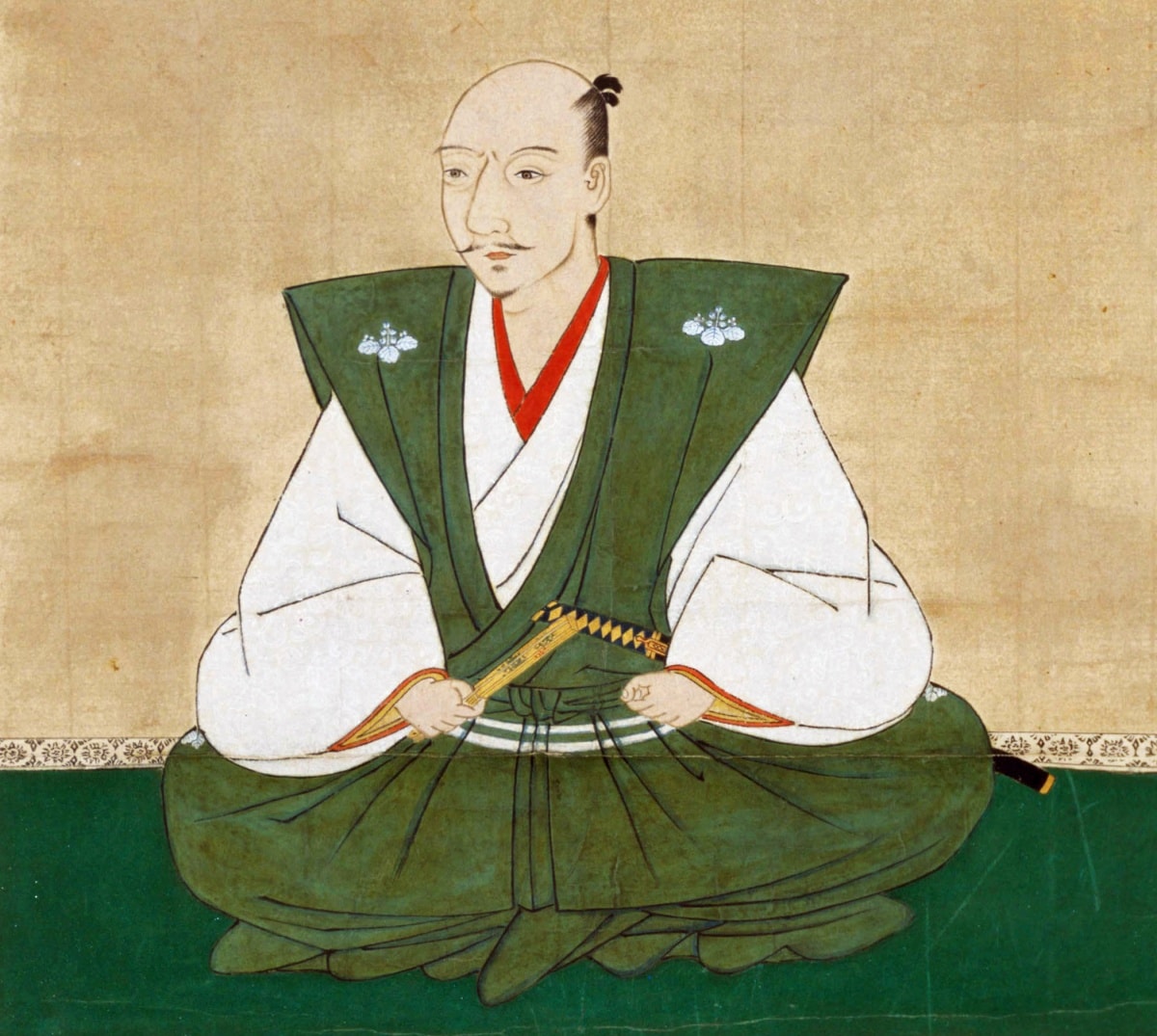
https://ja.wikipedia.org/wiki/%E7%B9%94%E7%94%B0%E4%BF%A1%E9%95%B7
While Miyamoto Musashi may be the best-known "samurai" internationally, Oda Nobunaga (1534-1582) claims the most respect within Japan. Beyond being a superb warrior and strategist, Nobunaga was responsible for setting in motion the chain of events that would reunify the nation and end the Warring States Period.
While the Ashikaga Shogunate nominally ruled Japan during the Muromachi Period (1336-1573), outside of Kyoto the real power came to be held by local daimyo, leaving the nation regionally fractured. Nobunaga was born into a family with holdings in Owari Province, now part of Aichi Prefecture, and following the death of his father in 1551, he united his clan and took control of all of Owari by 1559. He then defeated his major rival in the region, Imagawa Yoshimoto, in 1560, and in 1561 he went on to attack Mino Province, the southern part of modern-day Gifu Prefecture—a name it received from Nobunaga himself when he took Inabayama Castle and renamed it Gifu Castle in 1567.
At the behest of Ashikaga Yoshiaki, Nobunaga then went on to Kyoto in 1568 to depose the ruling Ashikaga shogun, Yoshihide. Installing Yoshiaki as the new shogun, Nobunaga hoped to use him as a puppet leader. However, as Nobunaga's power rose, strong forces began to coalesce against him. He wiped out the opposing warrior monks of Mount Hiei in 1571, besieged the Ikko-ikki peasants and warrior monks at Nagashima and Ishiyama Hongan-ji (ultimately taking Nagashima in 1574 and Ishiyama in 1580), and when shogun Yoshiaki raised his own forces against his former ally, Nobunaga defeated them and sent Yoshiaki into exile, thus ending the Ashikaga Shogunate in 1573.
Nobunaga also crushed the opposing Asakura Clan in Echizen Province (now northern Fukui) and the Azai Clan in Omi Province (now Shiga) in 1573, and after his now-ally Tokugawa Ieyasu resisted assaults by Takeda forces in Mikawa Province (eastern Aichi), the two teamed up and used arquebuses to hammer the Takeda Clan at the Battle of Nagashino in 1575, ultimately defeating the clan completely in 1582.
Through his own strategies and the work of his allies and vassals, Nobunaga succeeded in bringing the southern half of mainland Japan under his control, laying the groundwork for the reunification of the nation. After Nobunaga's betrayal and death at Honno-ji Temple in 1582, Toyotomi Hideyoshi went on to complete what his leader had started.
While Hideyoshi and Ieyasu reaped the rewards of conquest, Nobunaga is remembered as the greatest warrior of the three. Of Japan's Three Great Unifiers, it's said, "Nobunaga pounds the rice cake, Hideyoshi kneads it, and Ieyasu sits down and eats it."
Honorable Mention: William Adams (a.k.a. Miura Anjin・三浦按針)
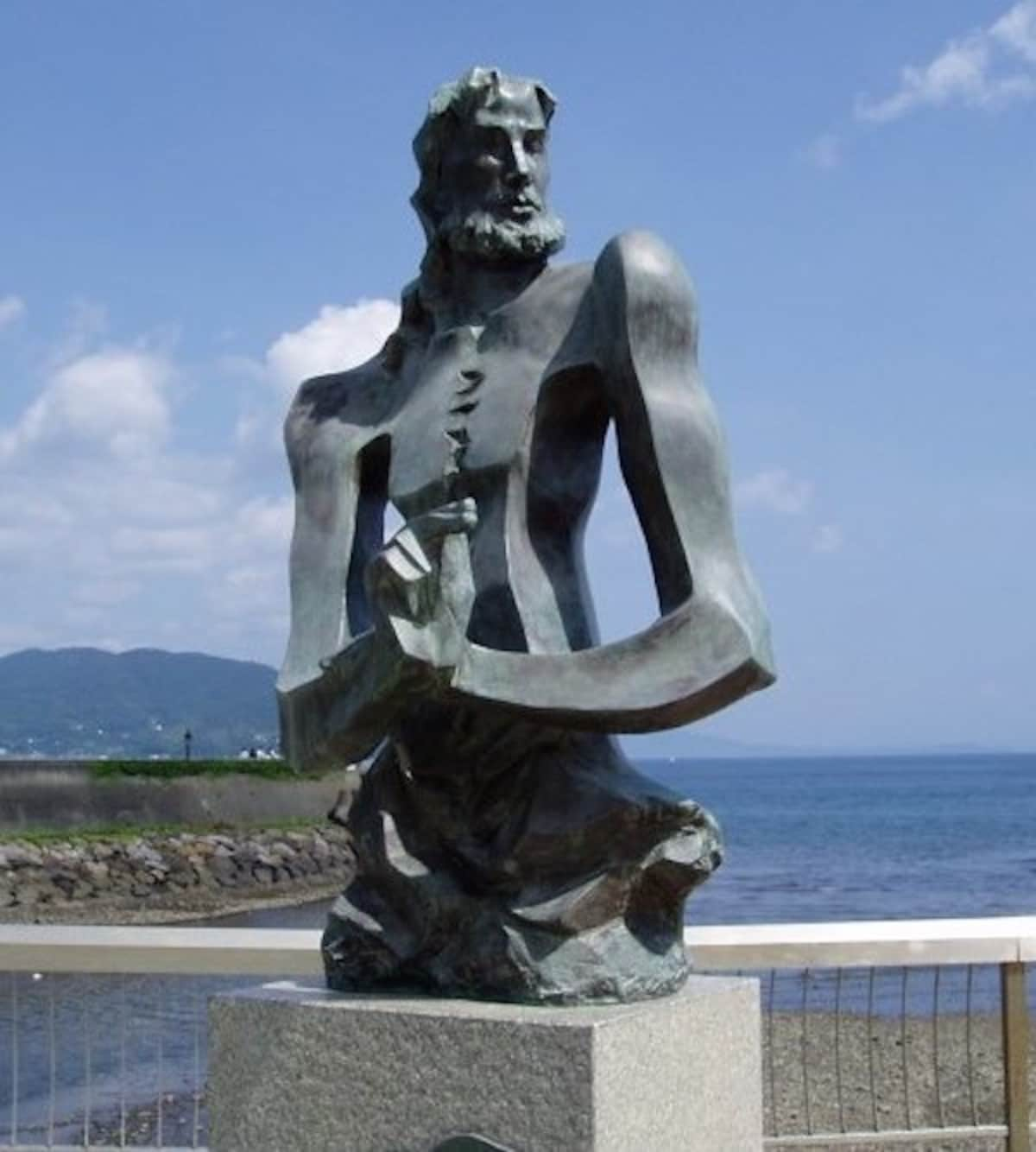
https://en.wikipedia.org/wiki/William_Adams_(sailor)
William Adams (1564-1620) was the first Englishman to visit Japan. He was the pilot on a Dutch expedition to the Far East, but after becoming separated from the rest of the small fleet by storms, his ship ended up stranded off Bungo, present-day Usuki in Oita Prefecture, in April 1600.
The 20 or so sickly crew were taken to Osaka at the command of Tokugawa Ieyasu. Though Ieyasu was consolidating his power over Japan, he had not yet won the decisive Battle of Sekigahara, which would come in October. In fact, in that battle Ieyasu would make use of the 19 bronze cannons taken from Adams' ship, and again brought them to bear against Toyotomi Hideyori at Osaka Castle in 1615.
Ieyasu was impressed with Adams' knowledge of shipbuilding, and in 1604, ordered him to supervise construction of Japan's first Western-style ship, built in Ito on the east coast of the Izu Peninsula. Ieyasu ultimately made Adams a samurai, presenting him with two swords and an estate on the Miura Peninsula in what's now Kanagawa Prefecture, where he came to be known as Miura Anjin (anjin means "pilot").
Adams never fought in any battles, but served as a diplomat and encouraged trade. In 1613 he helped establish a trading post for the East India Company at Hiroado in Kyushu, and though he was forbidden to return home, he was thereafter able to send support to his wife and children in England—though he also married a Japanese woman with whom he had two children.
Adams undertook various expeditions around Southeast Asia between 1614 and 1619, finally dying at Hirado in 1620, where he is buried. The unprofitable English trading post shut down in 1623. In 1975, Adams' story became the inspiration for James Clavell's novel Shogun.
Related Articles
Warrior Portfolio: From “An Illustrated Guide to Samurai History and Culture”
In Samurai Footsteps: The 47 Ronin Tour




